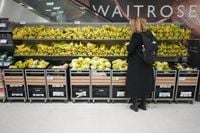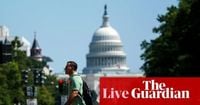The John Lewis Partnership, the UK’s largest employee-owned business, has found itself once again in the headlines this week as it reported a substantial half-year loss, despite achieving record customer satisfaction and a notable rise in sales. The group, which operates 36 John Lewis department stores and 300 Waitrose supermarkets, posted a 4% increase in sales to £6.2 billion for the six months leading up to July 26, 2025. However, rising costs and new regulatory pressures have cast a long shadow over the retailer’s bottom line, with pre-tax losses widening to £88 million from £30 million a year earlier, according to figures reported by multiple outlets including The Independent and Evening Standard.
What’s behind these mounting losses? The answer, it seems, lies in a combination of external regulatory changes and internal investment decisions. A new packaging tax—part of the government’s Extended Producer Responsibility (EPR) scheme—kicked in after the 2024 autumn Budget, costing the group an additional £29 million in the period. On top of that, national insurance contributions rose, further squeezing margins. The partnership also spent a hefty £54 million on restructuring, mainly to overhaul outdated technology systems, and an additional £22 million in preparation for the packaging levy that comes into force in October 2025, as reported by The Times.
Despite these challenges, there are glimmers of hope. Chairman Jason Tarry, who took the reins a year ago, struck a confident note. "Our clear focus on accelerating investment in our customers and our brands is working: more customers are shopping with us, driving sales, and helping Waitrose and John Lewis outperform their markets," he said, as quoted in The Independent. Tarry also highlighted that the group achieved its highest ever levels of positive customer satisfaction—a testament, he said, to the dedication of the company’s 69,000 partners (staff members).
One major bright spot in the results was Waitrose. For the first time, sales at the supermarket chain surpassed £4 billion in the first half, with a 6% increase driven almost entirely by like-for-like sales. John Lewis department store sales also nudged up by 2% to £2.1 billion. Outgoing Waitrose managing director James Bailey noted that food inflation is expected to remain elevated through Christmas and into 2026, though he expressed hope for a downward trend after that period. Bailey will be succeeded in January 2026 by Tom Denyard, who previously worked alongside Tarry at Tesco.
But the numbers tell a story of a business still in transition. The pre-tax loss before exceptional items was £34 million for the 26 weeks ending July 26, 2025. However, when exceptional costs related to the ongoing turnaround programme and non-cash impairments were factored in, the loss ballooned to £88 million. This is a significant jump from the £30 million loss posted in the same period last year. As The Independent explained, much of the pain comes from the group’s aggressive investment plan: technology upgrades, supply chain improvements, and store refurbishments were all cited as necessary but costly steps to drive future growth.
According to Garry White, chief investment commentator at Charles Stanley, there are reasons for optimism. "For the first time in three years the department store has posted a first half profit, as its turnaround strategy kicks in," he noted. "Despite the difficult retail backdrop – sales were actually down 3% – it looks like the partnership will be in a great position to restart its staff bonus programme at the end of this year." That bonus scheme, a hallmark of the employee-owned business, has been on ice for four years. John Lewis told employees earlier this year that it is targeting a profit of £200 million for the 12 months ending January 2026, at which point it would consider reinstating the annual bonus for its partners. Still, Tarry cautioned that it was too early to predict whether the group will pay a bonus this year.
The timing of these results is crucial, as profits for the John Lewis Partnership are heavily weighted to the second half of the year, which includes the all-important Christmas trading period. Tarry underscored this, saying, "The investments we are making, combined with our plans for peak trading, provide a strong foundation for the remainder of the year. While we are reporting a loss in the first half, we’re well positioned to deliver full-year profit growth, which we’ll continue to invest in our customers and partners." This sentiment was echoed in The Evening Standard, which reported that the group is "well positioned" to deliver an increase on last year's annual pre-tax profit of £97 million.
Yet, the wider economic environment remains challenging. The Treasury is currently reviewing the business rates system—a tax on UK business properties—as part of efforts to boost growth and cut red tape. John Lewis, along with other major high street firms, recently met with Chancellor Rachel Reeves to discuss possible reforms. Reeves was quoted as saying, "Our economy isn’t broken, but it does feel stuck. That’s why growth is our number one mission." Any changes to business rates could have a substantial impact on John Lewis and other retailers, especially as they contend with rising costs from multiple fronts.
Meanwhile, the group’s significant investments in technology, supply chains, and stores are beginning to show results in terms of increased customer numbers and sales momentum. The company said it expects continued sales growth to support stronger profits in the second half of the year, even as it navigates “challenging” wider economic conditions.
For employees and customers alike, the question of whether the staff bonus will return looms large. The company’s leadership remains tight-lipped, but hopes are high that if the current trajectory holds, the much-loved tradition could make a comeback. For now, the focus is on steadying the ship, capitalizing on peak trading opportunities, and ensuring that recent investments pay off in the form of sustained profit growth.
As the year progresses, much will depend on how successfully John Lewis can translate its record customer satisfaction and sales gains into real, bottom-line improvement. The coming Christmas period—always a make-or-break time for UK retailers—will be a critical test. But with a strategy rooted in investment, customer service, and cautious optimism, the John Lewis Partnership is determined to weather the storm and emerge stronger on the other side.


